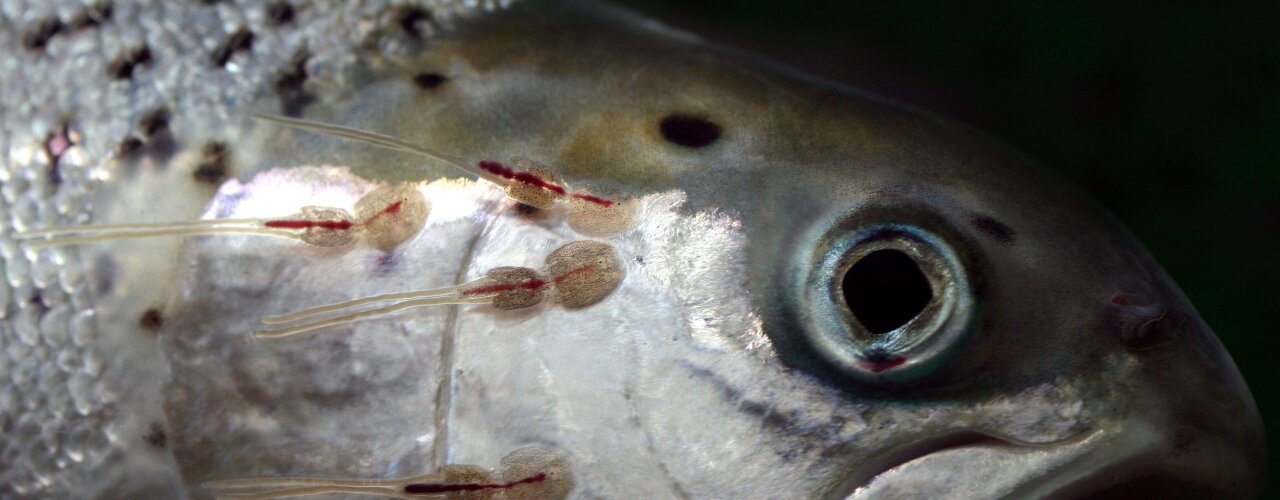What are salmon lice?
Salmon lice are in fact small crustaceans that go through eight stages of development. In the initial stages, the lice flow freely in the water and may spread over large areas. When the lice attach themselves to a host (fish), they start growing and eventually become reproducing adult lice.
Salmon lice live and reproduce on salmon and trout in seawater. Lice are found both on fish in aquaculture sites and on trout in the fjords and along the coast, throughout the year. They also follow wild salmon when they swim from the sea to the fjord in spring to spawn in the rivers. When the fish swim up the rivers, however, the lice fall off. High levels of salmon lice can be a real challenge both for farmed and wild salmon.
The lice create wounds that can cause infections and damage the fish's salt balance. Salmon lice do not affect the quality of the salmon and are not a threat to food safety.
Supervision
Knowing the status of lice in the salmon farm is crucial for assessing which measures to take and when to take them, and for coordinating actions in a zone or area. This knowledge provides the basis not just for controlling and limiting lice levels and for safeguarding the welfare of the fish and good slaughter quality, but also for helping the breeders to reduce the spread of infection to wild salmon and to salmon in their fish farms and to surrounding fish farms which stock salmon.The breeders are required to do weekly lice counts and the authorities have set a limit of 0.5 adult female lice per fish in the fish farms along the coast. The numbers are reported to the Norwegian Food Safety Authority and published at www.lusedata.no. (in Norwegian only)
Action
The aquaculture industry has introduced a number of measures to control the amount of lice. A particular challenge is that the lice have developed resistance to several treatments. Therefore, a number of alternatives are currently being developed. Local companies cooperate to ensure that treatments are used in the best way. Here are a few examples of measures:
- Breeding a type of salmon that doesn’t attract lice
- Special feed that strengthens the mucus
- Layer on the upper 5-10 metres of the cage's shielding skirt, to prevent lice from attaching themselves to the fish
- So called cleaner fish that eat lice
- Mechanical removal of lice, for example by flushing
- Tube nets that keep the fish below the level where lice are usually found
- Tepid water or freshwater that cause the lice to fall off
- Laser that eliminates the lice
- Bath treatment with approved medication, either in cages or in a well boat
- Medical feed treatments
Useful links
www.lusedata.no (in Norwegian only)
